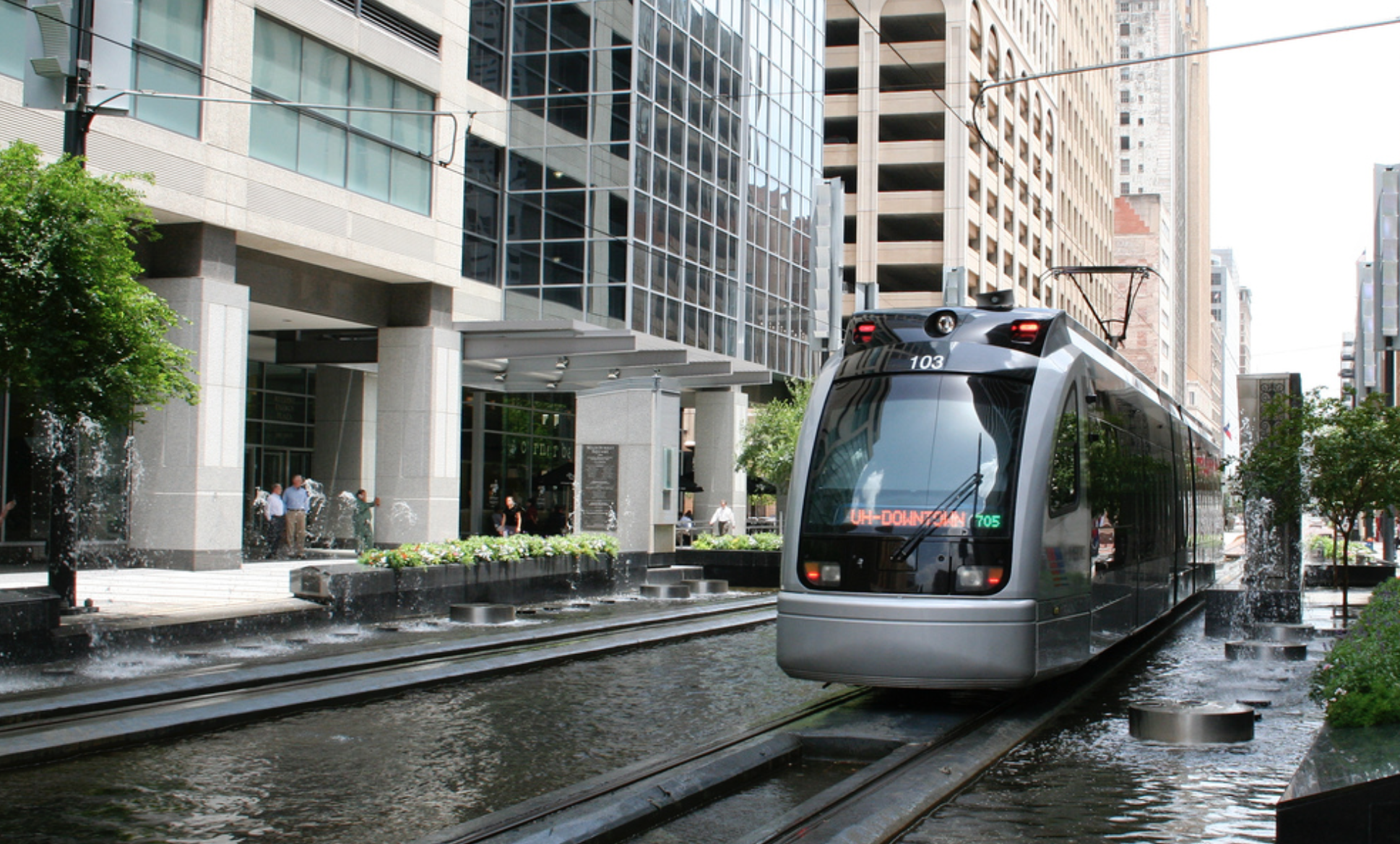A recent study suggests that the addition of Houston's first light rail line was at least partly responsible for a 24 percent reduction in carbon monoxide in the two years following its opening. The study, from Eun Sug Park and Ipek Nese Sener, both with the Texas A&M Transportation Institute, tracked several key pollutants linked to car emissions in the two years before and after the opening of the rail line, using scattered air monitoring devices within an 11-mile buffer of the line. The researchers compared the changes in those monitors, after controlling for the weather, to an additional monitor located in northwest Harris County, outside the 11-mile buffer zone.
The dangers of traffic-related emissions are becoming increasingly clear. After a recent report from the United Nations' Intergovernmental Panel on Climate Change argued that urgent and drastic action was needed to curb climate change, the European Union committed to cutting car emissions by 35 percent by 2030. While new technology can reduce emissions, cities will have to also invest in alternative transit and planning that encourages walking. As writer Alissa Walker put it, "...the most effective solutions for reducing traffic deaths—walk-first planning, complete streets—are also essential tools for reducing emissions."
In a city like Houston that can seem like a particularly big challenge. Roughly half of Houston's greenhouse gas emissions come from traffic and the city is among the highest when it comes to per capita greenhouse gas emissions. A still in the works climate action plan, announced in September, promises to cut emissions and become "carbon neutral by 2050," according to a recent release from the city. "Climate change is an unprecedented challenge for Houston,” said Mayor Sylvester Turner in the release.
But, as the study from the Texas A&M Transportation Institute shows, there are some real, fairly immediate benefits linked to such changes. Looking at several of what the study described as "primarily traffic-related pollutants," the researchers found that, in addition to large reductions in carbon monoxide, "we also observed noticeable reductions in the levels of acetylene, toluene, ethylbenzene, and xylene regardless of weather controls."
The study includes a few caveats, including that it didn't take into account any other factors that might have reduced traffic-related emissions in the study area and that there was a limited selection of available air monitors.
Because the construction of the light rail line offered a clear before and after landscape to test, it is a potentially simpler intervention to study than a city's many bus routes, for example, but advocates argue that encouraging a range of transit options can bring the sorts of benefits demonstrated here.
And in the end, the study can't prove the reductions were thanks to the light rail.
As the authors of the study wrote, "We hope that the results of this study which demonstrate a correlation can be used as suggested evidence of the positive effort of LRT obtained based on the actual air quality measurements and be viewed as a valuable first step toward establishing a causal relationship."

